Great Force


Image by David Hunter Hale for the Institute for Contemporary Art at Virginia Commonwealth University


Image by David Hunter Hale for the Institute for Contemporary Art at Virginia Commonwealth University


Image by David Hunter Hale for the Institute for Contemporary Art at Virginia Commonwealth University


Image by David Hunter Hale for the Institute for Contemporary Art at Virginia Commonwealth University


Image by David Hunter Hale for the Institute for Contemporary Art at Virginia Commonwealth University


Great Force
Oct 5, 2019 – Jan 5, 2020
History, as nearly no one seems to know, is not merely something to be read. And it does not refer merely, or even principally, to the past. On the contrary, the great force of history comes from the fact that we carry it within us, are unconsciously controlled by it in many ways, and history is literally present in all that we do.
—James Baldwin “The White Man’s Guilt.” Ebony Magazine, 1965
Great Force addresses the force of whiteness, the counter-force of black resistance, and the persistence of the color line in the United States. With new commissions and recent work by twenty-four artists, the exhibition presents painting, sculpture, photography, video, and performance that examine race in the United States. The exhibition extends from the first floor Beverly Reynolds Gallery and Royall Forum to the ICA’s second floor galleries, and includes offsite works, performances, and public programs.
Exhibiting artists:
Radcliffe Bailey, Benae Beamon, Kevin Beasley, Alexandra Bell, Paul Stephen Benjamin, Sedrick Chisom, Tony Cokes, Bethany Collins, Aria Dean, Tomashi Jackson, Richard Kennedy, Pope.L, Charlotte Lagarde, Glenn Ligon, Mores McWreath, Troy Michie, Shani Peters, Robert Pruitt, John Lucas & Claudia Rankine, Paul Mpagi Sepuya, Xaviera Simmons, Sable Elyse Smith, Carrie Mae Weems, and The Racial Imaginary Institute
Great Force is curated by Amber Esseiva and organized by the Institute for Contemporary Art at Virginia Commonwealth University. This project is supported in part by the National Endowment for the Arts.
Forum view: Great Force, 2019. Image by David Hunter Hale for the Institute for Contemporary Art at VCU.
Gallery 1 view: Great Force, 2019. Image by David Hunter Hale for the Institute for Contemporary Art at VCU.
Gallery 1 view: Great Force, 2019. Image by David Hunter Hale for the Institute for Contemporary Art at VCU.
Gallery 1 view: Great Force, 2019. Image by David Hunter Hale for the Institute for Contemporary Art at VCU.
Gallery 1 view: Great Force, 2019. Image by David Hunter Hale for the Institute for Contemporary Art at VCU.
Gallery 1 view: Great Force, 2019. Image by David Hunter Hale for the Institute for Contemporary Art at VCU.
Gallery 1 view: Great Force, 2019. Image by David Hunter Hale for the Institute for Contemporary Art at VCU.
Gallery 2 view: Great Force, 2019. Image by David Hunter Hale for the Institute for Contemporary Art at VCU.
Gallery 2 view: Great Force, 2019. Image by David Hunter Hale for the Institute for Contemporary Art at VCU.
Gallery 2 view: Great Force, 2019. Image by David Hunter Hale for the Institute for Contemporary Art at VCU.
Gallery 2 view: Great Force, 2019. Image by David Hunter Hale for the Institute for Contemporary Art at VCU.
Gallery 3 view: Great Force, 2019. Image by David Hunter Hale for the Institute for Contemporary Art at VCU.
Gallery 3 view: Great Force, 2019. Image by David Hunter Hale for the Institute for Contemporary Art at VCU.
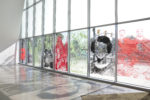

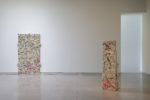
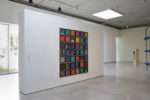
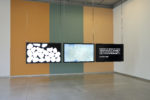
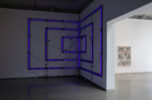

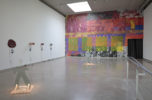
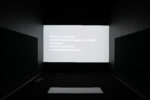
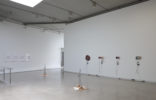

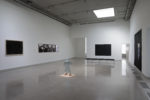


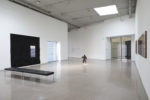
THE COLOR LINE
In the nineteenth and early twentieth centuries, writers and reformers such as Frederick Douglass and W.E.B Du Bois used the term ‘the color line’ to describe racial division and oppression in the United States and beyond. The color line describes this boundary, built by racism and protected by pseudo-science, the criminal code, segregation, and violence. History, designed and narrated in this way, privileges whiteness as the measure of humanity and in doing so inhibits the development of the American subject. Throughout this exhibition and accompanying publication, the color line provides us with a historical, conceptual, and visual boundary to push against America’s dominant narratives.
RICHMOND 2019
This year marks the 400th anniversary of the first recorded arrival of enslaved Africans to Hampton, Virginia in 1619. Richmond was the site of one of the largest slave auction markets in the United States, and continues to be haunted by that fact. This city was also the capital of the Confederate States of America which fought the United States to defend slavery. Monuments to the Confederacy still surround us. These realities allow for this place to become a locus for critical conversations around race relations. While this exhibition concerns itself primarily with the color line that has separated black from white, it must be noted that many other groups were and continue to be brutalized by America’s color line.
THE COUNTER FORCE
The works included in this exhibition foreground acts of resistance. Rather than offering explicit images of pain and subjugation or white domination, they use material and language to make apparent the cycles of history in the grip of white supremacy. In artmaking, when we demand artists of color rehearse radicality with images of pain and subjugation, we neglect both the precarity and the heterogeneity of their lived experiences.
The artists and literary thinkers included in Great Force show us that culture is always in communication with both past and present, propelled by a desire for change and revision. Together, we must set aside the racial binaries defined by the color line and dismantle the structural supremacy that whiteness has constructed for itself—a task that demands a collective reimagining and reorganizing of American identity.
Great Force is accompanied by a fully illustrated publication edited by curator Amber Esseiva, who also contributes an overview essay as well as texts on each artist. Essays by Frederick Douglass and James Baldwin accompany W.E.B. Du Bois’s 1900 hand-drawn data visualization infographics. Excerpts from Nell Irvin Painter’s The History of White People make evident that the mould of the American citizen was constructed under the pressure of white domination. Contributions by Nicholas Mirzoeff, The Racial Imaginary Institute, and Rebecca Walker theorize the ongoing effects of racial tensions in the midst of the current war on terror and the resurgence of white nationalism marked by the Obama and Trump administrations.
The publication is designed by Silas Munro and Brian Johnson, native Virginians who run the bi-coastal studio poly-mode. Taking design inspiration from W.E.B. Du Bois’s migration maps and charts. The book is set in William, a newly developed Du Boisian inspired typeface created by Tré Seals of Vocal Type.
The publication will be available for purchase at the ICA Shop; stay tuned for more information about the launch date. For purchase inquiries, please contact icashop@vcu.edu.
ALEXANDRA BELL
The Institute for Contemporary Art at VCU invited Alexandra Bell to install her artwork Charlottesville at the corner of Broad Street and Madison Street as part of our current exhibition Great Force.
Bell’s Counternarratives is a series exhibited in art institutions and on public facades that calls attention to journalism’s role in maintaining and circulating racial bias. Through the Counternarratives series, Bell hopes to create space for active and communal discussion around pressing topics in the news and get people to consider how the media packages those narratives. Charlottesville specifically criticizes The New York Times’ minimization of the violent attack on those protesting the Unite the Right rally in Charlottesville, VA on August 12, 2017.
Shortly after its installation, unknown individuals altered the work with spray paint to obscure its main image, and the ICA and the artist received feedback that the image caused emotional distress for survivors of the attack and their families and friends.
Though the ICA’s intention in displaying this work was to raise awareness of how racial biases pervade our culture, we acknowledge that this is not how it was received and regret any additional pain that may have resulted for the affected communities. After consultation with the artist, we have taken it down.
The ICA apologizes for not communicating with these groups more proactively to alert them to the work’s installation and to provide the necessary context. In the future the ICA will seek input from those directly connected to representations of violence prior to public display.
We are an institution that is committed to public dialogue and invite any survivors and their families, as well as various community groups, to contact us directly at ica@vcu.edu. We remain open to conversations around this project. For more information about Great Force or the ICA, please visit icavcu.org.
COLONIAL WHITE
Colonial White is an ongoing participatory project created by Charlotte Lagarde as part of The Racial Imaginary Institute, Interdisciplinary Cultural Laboratory, which will appear in our Fall 2019 exhibition Great Force (October 5, 2019-January 5, 2020).
THE RACIAL IMAGINARY INSTITUTE
The “racial imaginary” is meant to capture the enduring truth of race: it is an invented concept that nevertheless operates with extraordinary force in our daily lives, limiting our movements and imaginations. We understand that perceptions, resources, rights, and lives themselves flow along racial lines that confront some of us with restrictions and give others uninterrogated power. These lines are drawn and maintained by white dominance even as individuals and communities alike continually challenge them. Because no sphere of life is untouched by race, the Institute gathers under its aegis an interdisciplinary range of artists, writers, knowledge-producers, and activists. It convenes a cultural laboratory in which the racial imaginaries of our time and place are engaged, read, countered, contextualized and demystified.
—The Racial Imaginary Institute
Part public classroom and part open access research platform, The Racial Imaginary Institute (TRII) activates this section of Great Force as a place to read, reflect, and discuss together. Reading groups and public discussions will consider and question whiteness as a source of power and a persistent construct that affects our lives. All are welcome to use this space and to read these texts, which extend beyond TRII’s library on whiteness to reflect other topics central to artists in this exhibition.
Since 2017, TRII’s fluid, ongoing collaborative structure has mobilized artists, spaces, and organizations to produce art exhibitions, readings, dialogues, lectures, performances, and screenings that address race. Beginning with the project, “On Whiteness,” developed in collaboration with The Kitchen in New York City, TRII has located whiteness as their starting point for disrupting discourses on race and systematic racism.
Please do not remove reading materials from this area.
Contact curatorialGTA@vcu.edu for inquiries about space use.
TRII Curatorial team
Claudia Rankine, Poet
LeRonn P. Brooks, Curator
Monica Youn, Poet
Emily Skillings, Poet
Joeonna Bellorado-Samuels, Curator
Jennifer Uleman, Philosopher
Margo Okazawa-Rey, Interdisciplinary Scholar and Activist
John Lucas, Filmmaker
Casey Llewellyn, Playwright
LaTasha N. Nevada Diggs, Poet, Vocalist, Sound Artist
Max King Cap, Artist
Cathy Park Hong, Poet
Meg Onli, Curator
Sara’o Bery, Producer
Kaitlyn Greenidge, Writer
Simon Wu, Curator and Program Coordinator of TRII

 10 AM-5 PM
10 AM-5 PM

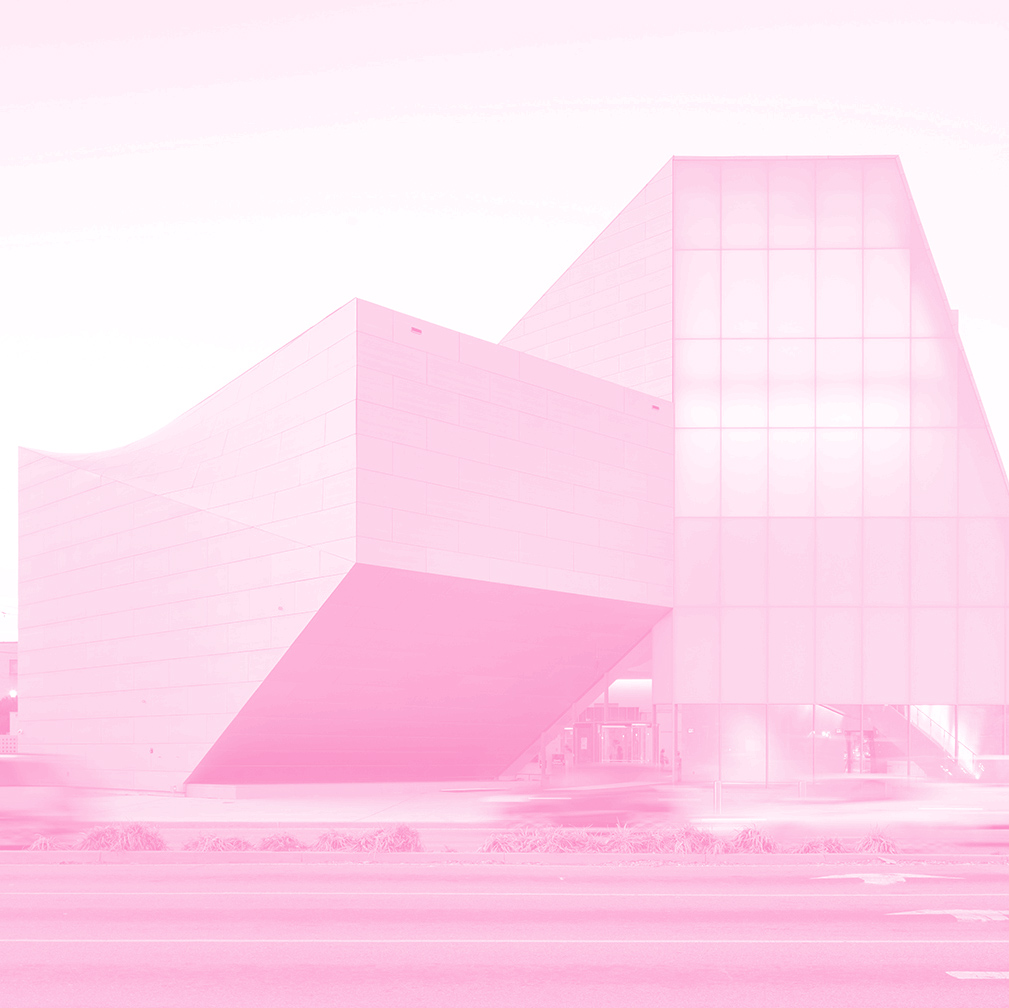 Area Map
Area Map  Parking
Parking